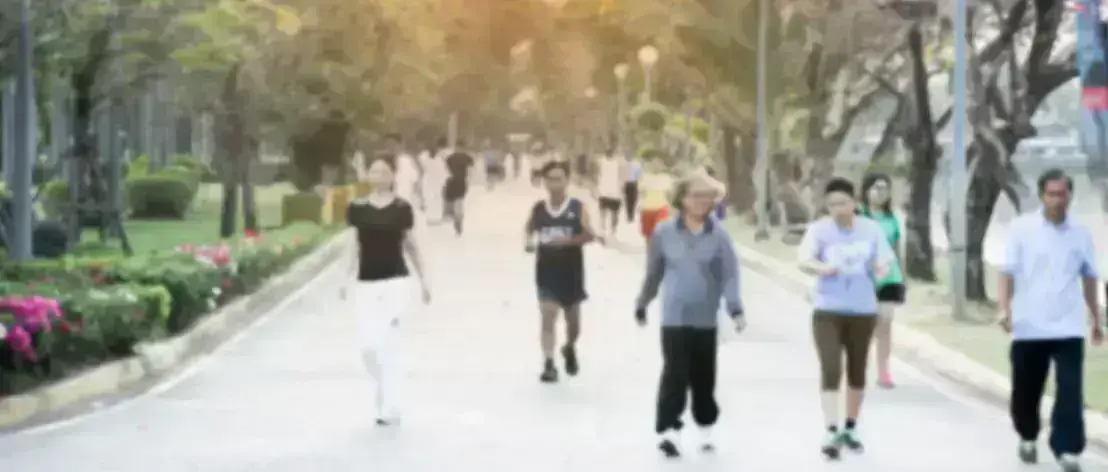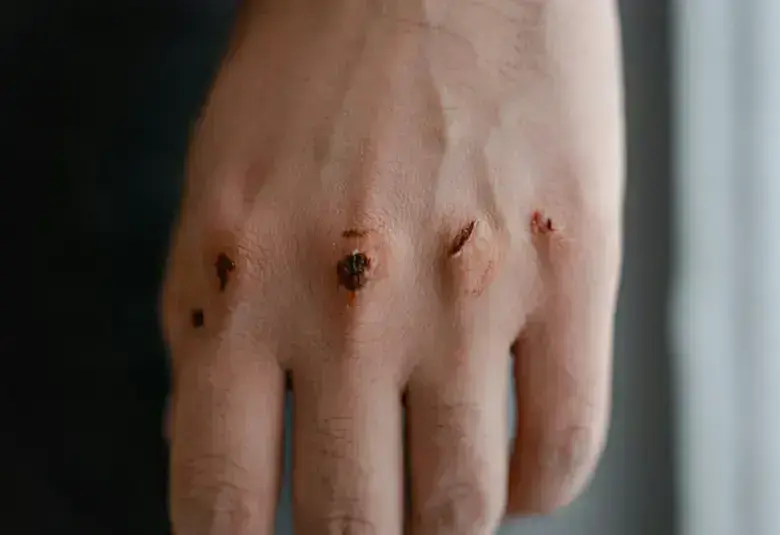From the corridors of the WHO in Geneva to the shopping malls of Singapore, efforts are being made to deal with the rising tide of dementia.
스위스 제네바의 세계보건기구(WHO) 건물 복도에서부터 싱가포르 쇼핑몰에 이르기까지, 치매 환자 증가 문제를 해결하기 위한 노력이 전 세계적으로 이루어지고 있습니다.
With a new case occurring every three seconds, the number of people with dementia is set to triple between now and 2050, when there will be more than 150 million cases worldwide. Sometimes the statistics are daunting; perhaps almost paralyzing in their scale. But then there are finer-grain data that suggest that there is opportunity for intervention.
매 3초마다 새로 환자 1명이 발생하고 있는 치매 인구는 2050년에 이르면 현재 대비 3배 증가해 세계적으로 1억 5000만 명을 넘어설 것으로 예상됩니다. 때때로 이러한 통계 수치는 너무 위압적이며, 그 거대한 규모 앞에서 우리는 그저 무력감만 느낄 수도 있습니다. 하지만 좀 더 세부적으로 분석한 데이터를 살펴보면 치매 중재(intervention)에 대한 기회를 찾을 수 있습니다.
In Singapore, the prevalence of dementia is 1.8% in Chinatown but 5% in the middle-class suburbs. A likely explanation is the greater prevalence among the suburban population of diabetes and social isolation. Both are pointers towards prevention, Kua Ee Heok (National University Hospital, Singapore) told the Mexico City meeting.
싱가포르의 경우 치매 유병률은 차이나타운 지역에서 1.8%인 반면, 중산층 거주 교외 지역에서는 5%로 나타납니다. 여기서 당뇨와 사회적 고립이라는 문제를 겪는 교외 인구에서 치매 발병률이 높은 것이라고 추정해볼 수 있습니다. 멕시코시티에서 열린 회의에서 쿠아 이 헉(Kua Ee Heok, 싱가포르 국립대학병원) 박사는 이 두 가지 문제 모두 치매 예방의 단서가 될 수 있다고 말했습니다.
Fine-grain data suggest opportunity for intervention
세부 데이터를 살펴보면 치매 중재의 기회가 보입니다
Aging Well Everyday (AWE)
매일 건강하게 늙기(AWE: Aging Well Everyday)
A result of such insights is the ten-year long Jurong Aging Study,1which meets its two thousand participants not in a clinical setting but in a shopping mall. Local elderly people are encouraged to come to the mall and talk about health education and hypertension, but they are also engaged in a program of Tai Chi, reminiscence music therapy, art therapy, and mindfulness – all of which can achieve helpful reductions in subsyndromal anxiety and depression.
이러한 통찰의 결과는 10년에 걸친 주롱 노화 연구(Jurong Aging Study)1로 구현됩니다. 이 연구는 참여자 2000명을 임상 환경이 아니라 쇼핑몰에서 만나면서 진행됩니다. 연구에 참여하는 현지 노인들은 쇼핑몰을 방문해 건강 교육과 고혈압에 관한 이야기를 나누는 한편, 태극권, 회상 음악 치료, 미술 치료, 명상 등의 프로그램에도 참여합니다. 이 프로그램들은 모두 경미한 불안감과 우울증을 완화하는 데 도움이 됩니다.
Mindfulness in particular seems to have helpful effects in slowing cognitive decline. Achieving even the modest aim of postponing the onset of dementia by a few years would profoundly reduce disease burden.
특히 명상은 인지 기능 저하 속도를 늦추는 효과가 있는 것으로 보입니다. 치매 발병을 단 몇 년이라도 지연시킨다는 기본적인 목표를 달성할 수 있다면 질환에 대한 부담이 대폭 완화될 것입니다.
While small, “care for the community by the community” initiatives of the kind described above are one approach to dementia, there is no doubt of the need for action on a larger scale. The majority of new dementia cases will be in low and middle income countries (LMICs) – hence the need for a global approach of the kind outlined by Tarun Dua (WHO, Geneva, Switzerland)
비록 작은 노력이지만 앞서 언급한 유형과 같은 ‘지역사회가 스스로 돌보는 지역사회’라는 이니셔티브는 치매 예방을 향한 하나의 접근 방식이며, 이보다 더 큰 규모의 방안도 필요하다는 사실에는 의심의 여지가 없습니다. 앞으로 신규 치매 인구의 대다수는 중∙저소득 국가(LMIC)에서 발생할 것입니다. 이에 따라 타룬 두아(Tarun Dua, 스위스 제네바 세계보건기구) 박사가 제시한 유형과 같은 범세계적 접근법이 필요합니다.
A “care for the community by the community” model is proving productive in Singapore
싱가포르에서 ‘지역사회가 스스로 돌보는 지역사회’라는 모델이 효과를 입증하고 있습니다
The global perspective
범세계적 관점
The WHO is aiming for a combination of preventive strategies on the one hand, and care and support on the other -- such that both dementia sufferers and their carers can live well and fulfil their potential in dignity, respect and equality. With this in mind, the WHO has produced a guide to developing a national dementia plan. The approach is based on the interlocking principles of human rights, equity, empowerment, the availability of universal health and social care, and collaboration between agencies.
세계보건기구는 예방 전략, 그리고 돌봄 및 지원의 결합을 목표로 하고 있습니다. 이 방식을 통해 치매 환자들 및 보호자들의 삶의 질을 높이고 존엄성, 존중, 평등의 잠재력을 실현할 수 있습니다. 세계보건기구는 이러한 사실을 염두에 두고 국가별 치매 대응 계획의 개발을 위한 가이드를 마련했습니다. 이 방안은 서로 연결되어 있는 원칙들인 인권, 형평성, 권리 부여, 보편적 보건 및 사회 복지 접근성, 기관간 협력을 바탕으로 고안되었습니다.
One aim is a society that is dementia-friendly and inclusive. The other, of course, is prevention. And the underlying philosophy here is that what is good for the heart is good for the brain.
이 가이드의 목표 중 하나는 치매 환자에게 친화적이고 포용적인 사회를 조성하는 것입니다. 그리고 또 다른 목표는 단연 치매의 예방입니다. 여기에서의 기본 철학은 마음에 좋은 것이 뇌에 좋다는 것입니다.
The greatest burden in coming years will be in low and middle income countries. Hence the need for a global approach
앞으로 가장 큰 부담은 중∙저소득 국가에서 짊어지게 될 것입니다. 따라서 범세계적 접근법이 필요합니다
An IDEAL scale
이상적인 평가 척도 – IDEAL scale
Any approach to dealing with dementia needs tools to measure the severity of the problem and the needs of patients. As reported by Antonio Lobo (University of Zaragoza, Spain), the International Dementia Alliance (IDEAL) has developed a new scale for the clinical staging of dementia and assessment of care needs.
모든 치매 대응 방안에는 문제의 중증도를 측정하고 환자의 요구사항을 파악할 도구가 필요합니다. 안토니오 로보(Antonio Lobo, 스페인 사라고사대학교) 교수가 보고한 바에 따르면 국제치매협회(IDEAL)는 치매의 임상적 단계와 돌봄 수요를 평가하기 위한 새로운 척도를 개발했습니다.
Those familiar with its use say that this multidimensional scale -- designed to be sensitive enough to detect small differences in activities of daily living, cognition, physical health, social support and carer distress -- can be completed in five minutes. And that is all the time that many busy health workers have.
이 측정 방식을 능숙하게 다루는 사람들에 따르면, 이 다차원적 척도는 일상생활 수행능력, 인지기능, 신체 건강, 사회적 지원, 간병인 스트레스 등에서의 작은 차이까지 감지할 만큼 민감하게 고안되었습니다. 5분 이내에 측정이 완료되는데, 이는 다수의 바쁜 의료인들이 할애할 수 있는 최대 시간입니다.
본 자료는 Global Lundbeck 의학부에서 선별한 콘텐츠이며, 한국룬드벡의 의견과 다를 수 있습니다




